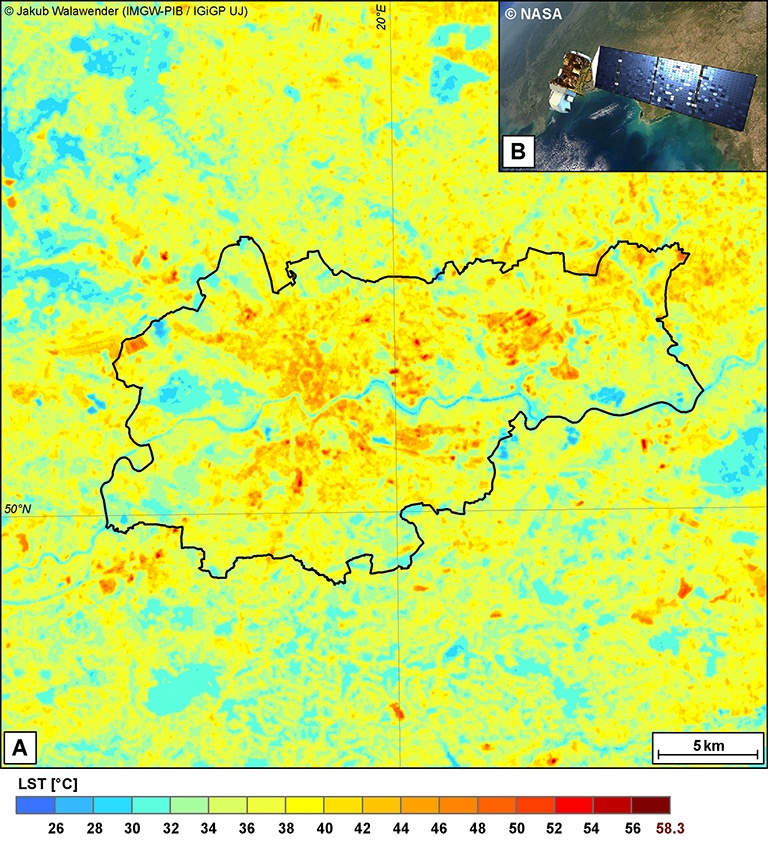Southern Poland - week 4 compulsory exercise
FC-02x Livable Future Cities ( 2nd Run) - Compulsory Exercise 2

Uploaded on 2016-05-02 by JolRy
Checked. For example: in Austin temperatures in the city can be up to 15°F higher than in the rural areas. 2.Which are the main UHI effects that you can identify in your area? UHI effects by magasine articles: The air pollution, bigger energy consumption during summer, older people's life in danger due to high temperatures during summer, decrease of water quality, storms in summer, better thermal comfort in the city centre during winter (because of moderate climate in Poland), the snow present often present in the rural area and not present in the city centre. I was unable to find scientific data about Gliwice (where I live). The city has about 250 000 habitants but it is located in the most urbanised area of Poland with lot of enviromental problems. It is hard to determine how big impact is made by UHI effect without specific data. I noticed that in my urban area there is more common to share with public data about air pollutions, because it is better known and widely discussed problem. Quotation from science article describing characterstic of my living area: „The Katowice Region, located in the Central Europe, is one such area. Nearly the entire area of this region is located on the Silesian Upland, and a dozen or so cities are concentrated in the center of the region. Urban and industrial complexes are interconnected via an extensive network of roads and railway lines. The location, significant emission of pollution, and characteristic atmospheric circulation all contribute to the occurrence of numerous unfavorable phenomena, such as: torrential downpours, storms, frequent fogs, urban heat islands (Oródka, 1983; Caputa, et al., 2003), smog phenomena, i.e. acid and photochemical smog (Oródka, L., wich-Skiba, J., 1997), and acid rains (Leniok, 1996; Hławiczka et al., 2003). „ */GIS approach to the spatial distribution of air pollution in the Katowice Region based on examples from the Mikołów and Bedzin districts / Zbigniew Caputa, Mieczysław Lesniok* I provide picture of city centre and rural area of where I live. When compared, it is obvious that in the rural area there is smaller buildings density and more greenery than in the city, so the UHI effect propably exist and make impact on the thermal comfort of citizens. ![Gliwice city centre][1] ![Garden in the rural area, where citizens are going for recreation][2] I provide image data of temperature diversity and surface temperature in bigger city – Cracow (also southern Poland). The HUI creates average temperature difference about 1-2°C, sporadically 5-7°C. For now, researches about Cracow area UHI are conducted by two cooperating institutions. ![Cracow atmospheric temperature][3] ![Cracow surface temperature][4] source of data about Cracow : http://zielonainfrastruktura.pl/miejska-wyspa-ciepla-negatywne-skutki-urbanizacji-oraz-mozliwosci-przeciwdzialania-na-przykladzie-krakowa/ 3.Which are the measures you would propose? According to researches I would propose urban planning and design that incorporates more trees and parks, white roofs, alternative materials for urban infrastructure. We have already learn to monitor pollution level in cities, so it is also time to start constantly monitor the UHI effect and develope a system that informs citizens about the impact and intesity of this phenomena. 4.Is UHI effect concerning policy making in your area? I didn't find any information about this. [1]: https://edxuploads.s3.amazonaws.com/14622171225992379.jpg [2]: https://edxuploads.s3.amazonaws.com/14622171363241605.jpg [3]: https://edxuploads.s3.amazonaws.com/14622173753938243.jpg [4]: https://edxuploads.s3.amazonaws.com/1462217393411775.jpg